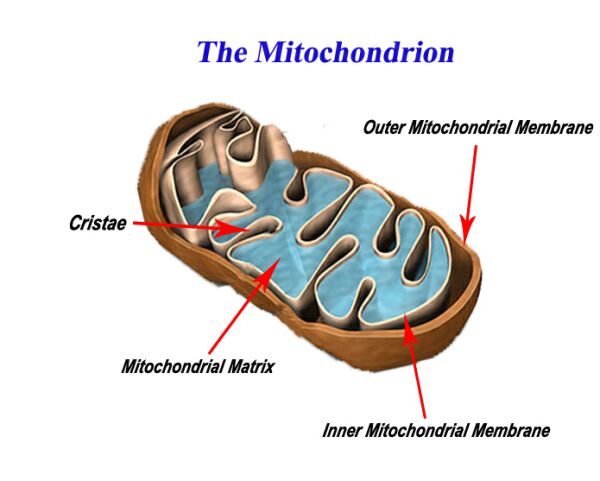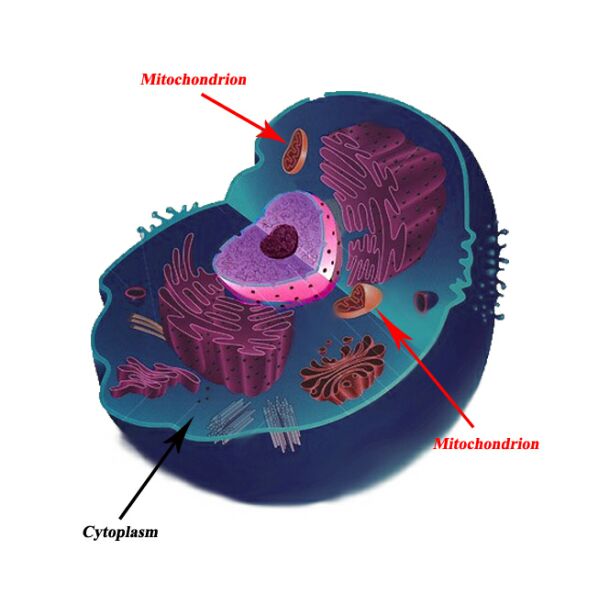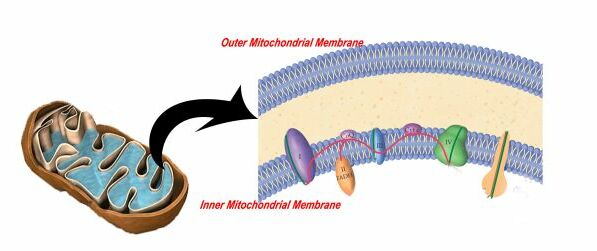What Does Mitochondria Do In A Animal Cell
| All Most Mitochondria | Basic Biology | Full general Symptoms | Diseases at the Molecular Level | Inheritance Patterns |
| Diagnosis of Diseases | Direction of Diseases | Links | Disease Database | References |
Inside the Mitochondrion
What are mitochondria?
Mitochondria are essential components of about all cells in the trunk. These organelles are the powerhouses for cells, providing free energy to carry out biochemical reactions and other cellular processes. Mitochondria make energy for cells from the chemical energy stored in the nutrient we eat.
Where are mitochondria plant?
Mitochondria are plant in all body cells, with the exception of a few. There are normally multiple mitochondria found in one jail cell, depending upon the office of that type of jail cell. Mitochondria are located in the cytoplasm of cells along with other organelles of the cell.
History
How did mitochondria come up nearly?
This question has been raised due to many characteristics shared by mitochondria and other single cellular living organisms. For example, mitochondria are the just organelles in the jail cell which contain their own DNA, as well equally their ain protein making mechanism. Researched has shed light on the possibility of a theory known as endosymbiosis.
When life first began on our planet, single celled organisms produced energy in a way that was highly inefficient (anaerobic respiration, significant without oxygen) compared to what nearly multi-cellular organisms use today (aerobic respiration, using oxygen). Through evolutionary time, plants came well-nigh and were able to produce oxygen in the atmosphere giving rise to aerobic respiration which produced free energy in a highly efficient way. The theory of endosymbiosis suggests that mitochondria were once complimentary living organisms on their own that used aerobic respiration. Larger anaerobic cells simply engulfed these aerobic mitochondria to utilise their free energy, giving rising to complex cells we observe today such equally those in our bodies.
Timeline of Mitochondrial Illness
The area of mitochondrial medicine is extremely new, and therefore always expanding. The discovery of well-nigh mitochondrial diseases actually only occurred within the last 30 years. The timeline below shows some important milestones in the history of mitochondrial medicine:
1962 – The kickoff example of suspected mitochondrial disease occurs where a woman has an extremely fast and efficient metabolism, and mitochondria that were larger in size and number in her muscle tissue
1962 – Chemical staining is applied to mitochondria, to identify any observable changes in mitochondria under a microscope
1975 – First instance of MELAS is described
1981 – The mitochondrial genome is mapped
1982 – Scientific papers are published regarding Kearns-Sayre Syndrome and MERRF
1984 – First scientific paper published nearly MELAS
1991 – Biochemical and molecular analysis of tissue samples from patients becomes commercially available
How is energy made?
Our nutrient contains the edifice blocks of life known as macromolecules, namely carbohydrates, proteins and fats. The energy stored in the molecular bonds of these molecules is converted into a usable energy source in the body known as ATP. ATP is the only free energy currency that can be used in our bodies. This concept is analogous to energy from power plants entering our homes. Similar to macromolecules, there are many sources of energy including hydro, wind, nuclear etc. Although the sources are dissimilar, the energy that enters our homes is nearly always converted to electricity to power diverse devices, like to how just ATP in our cells is used to carry out cellular functions.
The actual production of ATP is quite a complex process. The inner membrane of the mitochondrion is what is responsible for mass free energy production.
Specifically, five proteins form a chain on the inner mitochondrial membrane known equally the respiratory chain that transfers energy (in the course of an electron) along these five proteins until it becomes ATP. This is shown in the blitheness beneath.
Source: https://www.lhsc.on.ca/medical-genetics-program-of-southwestern-ontario/all-about-mitochondria
Posted by: arndtthemen.blogspot.com




0 Response to "What Does Mitochondria Do In A Animal Cell"
Post a Comment